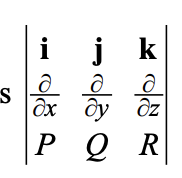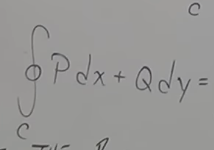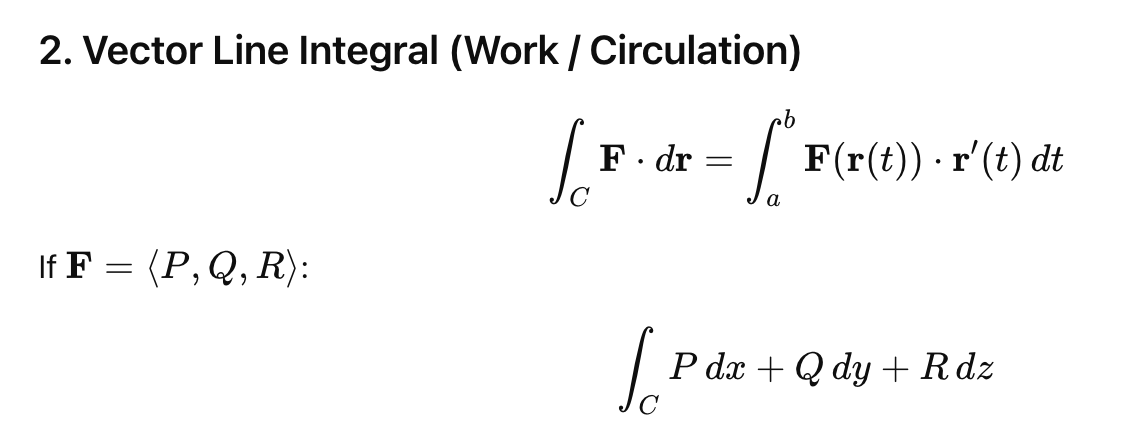Multivariable Calculus Lecture 12
1/9
There's no tags or description
Looks like no tags are added yet.
Name | Mastery | Learn | Test | Matching | Spaced |
|---|
No study sessions yet.
10 Terms
Divergence: measurement of how much fluid/flow enters the neighborhood around “P” compared to how much leaves
if more fluid/flow enters the nei. than leaves it, then divergence will be ___ (gathering)
if the same amnt of fluid/flow enters and leaves, then divergence will be __ (incompressible)
if more fluid leaves than enters then divegence will be ___ (diverging)
-, 0, +
Div F =
scalar

Curl: measurement of rotation of VF in nei around P
if curl __, then rotate counterclockwise at P
if curl __, then rotate clockwise at P
if curl = __, no rotation at P
+, -, 0
curl(F)
you write in P, Q, R
ans is vector


Green’s theorem: deals with line ∫ of simple closed curves over non-conservative vector fields
if over conservative vector field…
W = 0

How to use green’s theorem
draw ____
label __ & __ in the line integral expression (components of vector field F(x,y))
write out double integral ∫ ∫R ∂Q/∂X-∂P/∂y dA and fill in _____
If you get 0 for ∂Q/∂X-∂P/∂y, then the vector field is ____ and the work done = __
Find the ___ and finish writing the double integral
integrate
curve/region
P, Q
∂Q/∂X-∂P/∂y
conservative, 0
region
area of ellipse
abπ
Area of region enclosed by curve

Using green’s theorem, if you get ∫ ∫R 1 dA from step 2, the line ∫ =
area of region
When to use each line integral/work equation
If the integral is of a scalar density (like mass):
If the integral is over a nonconservative vector field:
If the integral is over a conservative vector field:
If the integral is of a simple closed curve over nonconservative vector field



